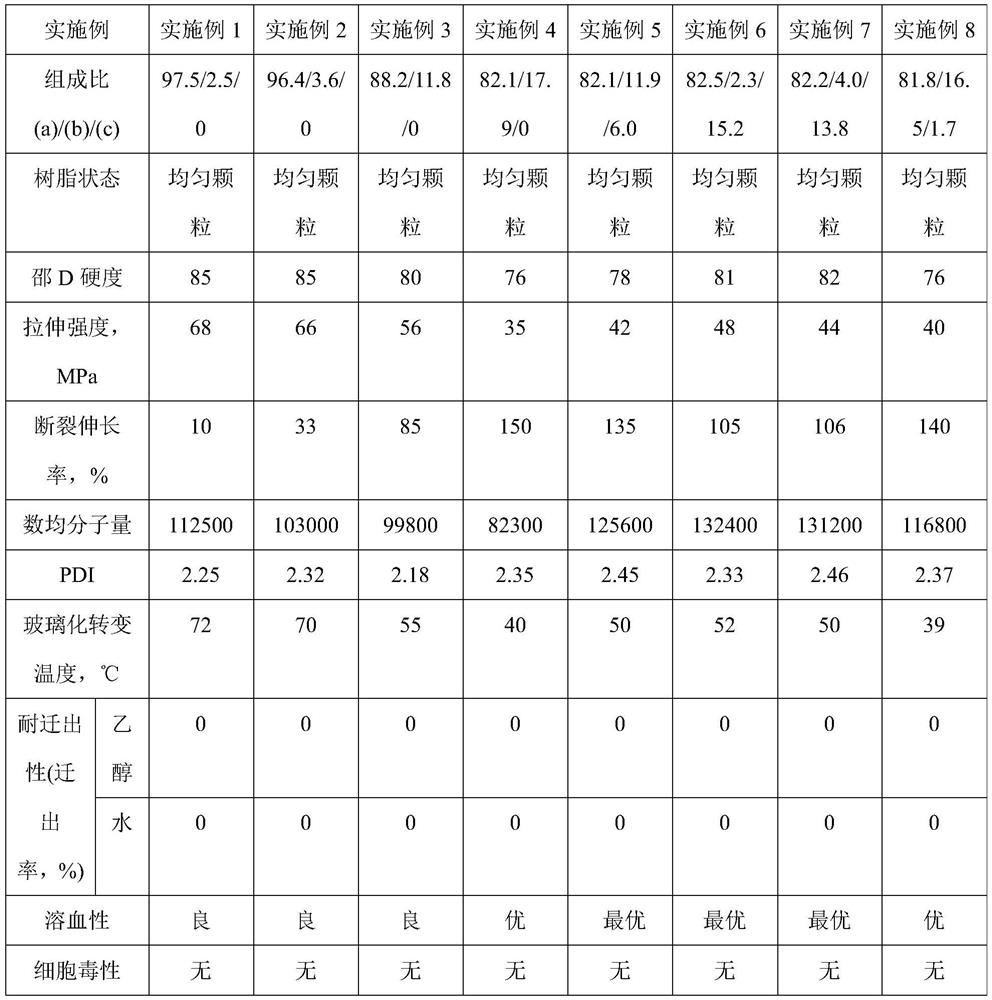Rigid polyvinyl chloride copolymer, method for producing rigid polyvinyl chloride copolymer, composition comprising rigid polyvinyl chloride copolymer, and resin product produced from composition
A vinyl chloride and copolymer technology, applied in the field of vinyl chloride resin synthesis, can solve the problems of no industrial application value, difficulty in realizing self-plasticization, poor product structure control, etc., achieve good biocompatibility, improve self-increasing Plasticity, no cytotoxic effects
- Summary
- Abstract
- Description
- Claims
- Application Information
AI Technical Summary
Problems solved by technology
Method used
Image
Examples
preparation example Construction
[0123]
[0124] The preparation method of the rigid vinyl chloride copolymer of the present invention is the preparation method of the above rigid vinyl chloride copolymer, which comprises: comprising vinyl chloride, monomers represented by the above formula (1) and optional above formula The raw materials of the monomers shown in (2) are copolymerized.
[0125] The details of vinyl chloride, the monomer represented by formula (1), the monomer represented by formula (2) and other monomers have been described above, and will not be repeated here.
[0126] Examples of copolymerization reactions of the present invention include, without limitation, block polymerization, random polymerization, graft polymerization, gradient polymerization. Among them, random polymerization is preferable from the viewpoint of expressing the technical effect of the present application more favorably, that is, the molecular chain of the rigid vinyl chloride-based copolymer of the present invention ...
Embodiment 1
[0183] In a stainless steel micro-reactor with an internal volume of 200ml of stirring blades, 100g of deionized water, 10.4g of 2 mass % PVA aqueous solution, 0.042g of hydroxypropylmethylcellulose, 0.05g of azobisisobutyronitrile, 1.62 g of polypropylene glycol monomethacrylate with a molecular weight of 375 (PPGMA-375, the case where x=5 in formula (1)) was filled with nitrogen for 5 minutes to replace the air in the reaction vessel. Then, 52.38 g of VC monomer was introduced into the reactor. After pre-stirring for 60 minutes, the temperature was raised to 70°C to start polymerization. It should be noted that the monomer feeding mass ratio VC:PPGMA-375=97:3, and the polymerization reaction time was 8 hours. After the polymerization reaction was completed, unreacted VC monomer was reclaimed, and the polymerization product was alternately washed with a large amount of deionized water and ethanol to obtain 50.5 g of the vinyl chloride copolymer of white solid particles, and i...
Embodiment 2
[0185] Change the feed mass ratio of VC and PPGMA-375 to be VC:PPGMA-375=95:5 and the polymerization reaction time is 7.5 hours, except that, in the same manner as in Example 1, obtain the vinyl chloride copolymerization of white solid particles 51.2 g of the product, the composition: the content of the structural unit (a) was 96.4% by mass, and the content of the structural unit (b) was 3.6% by mass based on the total mass of the vinyl chloride-based copolymer.
PUM
 Login to View More
Login to View More Abstract
Description
Claims
Application Information
 Login to View More
Login to View More - R&D
- Intellectual Property
- Life Sciences
- Materials
- Tech Scout
- Unparalleled Data Quality
- Higher Quality Content
- 60% Fewer Hallucinations
Browse by: Latest US Patents, China's latest patents, Technical Efficacy Thesaurus, Application Domain, Technology Topic, Popular Technical Reports.
© 2025 PatSnap. All rights reserved.Legal|Privacy policy|Modern Slavery Act Transparency Statement|Sitemap|About US| Contact US: help@patsnap.com


